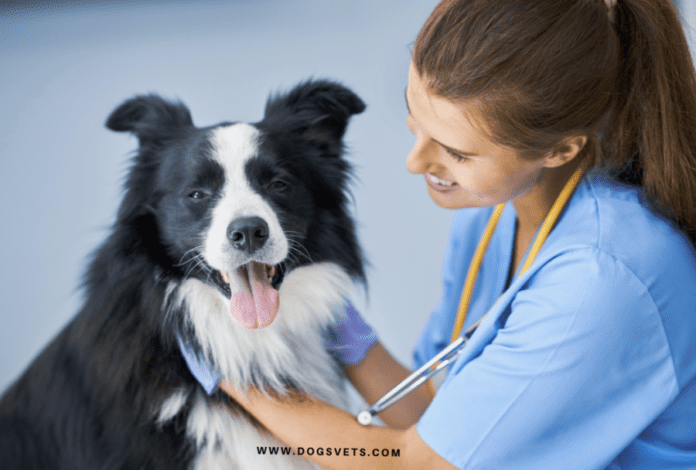Last Updated on September 1, 2022 by Dogs Vets
How to treat arthritis in dogs with medication and Treatment – Dogsvets
Arthritis is a condition that affects the joints of the body. It can be mild or severe, and dogs can develop it at any age.
Arthritis pain can lead to lameness, difficulty moving around, and arthritis-related inflammation.
Thankfully, there are many ways to help your dog cope with arthritis pain and inflammation, and medication is one of the most common methods.
In this blog post, we’re going to outline the different types of arthritis medication for dogs, the signs of arthritis in dogs, and the side effects of arthritis medication for dogs.
We’ll also provide information on how to give arthritis medication to a dog, as well as tips on how to ease your dog’s pain and inflammation. So don’t wait – read on to learn everything you need to know about treating arthritis in dogs!
How to give arthritis medication to a dog?
There are a variety of ways to treat arthritis in dogs, but the most important thing is to find a medication that works best for your pet.
If your dog is too sick or uncomfortable to take medication orally, you can try administering them through an injection or patch.
Different methods work better for different pets, so be sure to choose the one that is best for your dog.
Keep a close eye on your pup during treatment as adverse reactions can happen at any time. Always start with pills and slowly work up to giving liquid solutions or food supplements.
Arthritis medication is important, so be sure to give it to your dog as prescribed by a veterinarian.
What is arthritis?
Dogsvets is here to help you with your dog’s health and wellbeing. In this article, we will be discussing arthritis, its causes, and the different treatment options that are available.
Arthritis is a type of joint disease that affects the cartilage in dogs’ joints. This condition can cause lameness, difficulty getting up from a laying position, and poor drinking ability.
Early detection and treatment is key to treating arthritis in dogs successfully!
So, if you notice any of these signs in your dog, be sure to consult your veterinarian. They will be able to guide you in the right direction and recommend the best treatment options for your furry friend. Stay safe and happy vet-ing!
View this post on Instagram
Signs of arthritis in dogs
If you’re noticing any of the following signs in your dog, it’s time to take them for treatment:
loss of appetite, reluctance to move around, lameness or stiffness when walking or moving about casually, slow healing wounds or cuts…etc. As dog’s joints begin to wear down with age, arthritis can set in.
Treatment options vary depending on the severity of arthritis, but may include medication and/or regular analgesics such as ibuprofen/paracetamol.
There are many ways to detect arthritis in a dog – your vet can do an exam or blood test to check for the signs. In most cases, early diagnosis and treatment is essential for the best possible outcome.
Types of arthritis medications for dogs
Arthritis is a common disease that affects the joints and cartilage in the dog’s body. The disease can cause pain, inflammation, and lameness.
Treatment typically includes both medication and exercise, so be sure to consult with your veterinarian about a plan specific for your dog’s condition.
There are many types of arthritis medication that can be used to treat dogs, and each has its own set of side effects and benefits.
Make sure to read the label carefully and follow the instructions carefully to ensure you’re giving your dog the best possible treatment.
Types of arthritis in dogs
Arthritis is a common disease in dogs, affecting them at different ages and with different severity. It is typically caused by inflammation, and can affect the joints in different ways.
Periarticular or juvenile arthritis affects young dogs more frequently than adults, but both can be affected by it. Enthesitis-related arthritis typically occurs when inflammation accumulates around a joint’s tendon sheath (a protective layer).
Synovial arthritis is the most common type and usually affects the joints between bone and cartilage.
There are three main types of arthritis in dogs – synovial, periarticular, and enthesitis-related arthritis. Treatment typically involves medication and/or treatment of the inflammation with anti-inflammatory drugs.
Side effects of arthritis medication for dogs
Dogs with arthritis often experience pain, stiffness, and difficulty moving around.
Fortunately, there are a variety of medications available to help relieve these symptoms.
Make sure to consult with your veterinarian before starting any type of medication treatment plan, as side effects may occur.
Some common medications used to treat dog arthritis include glucosamine and chondroitin supplements, anti-inflammatory drugs, and pain relief drugs.
View this post on Instagram
Always be sure to monitor your dog closely while they’re taking their medication – side effects may occur that you’ll need to address promptly.
If you’re feeling up for a challenge, dig deep and learn about dog arthritis. This comprehensive blog post will teach you everything you need to know about the condition.
Frequently Asked Questions
What are the best medications for treating arthritis in dogs?
There are a variety of medications that can be used to treat arthritis in dogs. However, it is important to note that each pet’s response to medication is different.
Some of the best medications for treating arthritis in dogs include Metacam and Rimadyl.
Metacam is a painkiller that comes in oral form and has anti-inflammatory properties. Rimadyl is an anti-inflammatory drug used primarily for treating pain in animals, and it is generally well-tolerated.
Always consult your vet before giving medication to your dog as they will prescribe the best dosage for their individual pet.
How often should I treat my dog for arthritis with medication?
There is no one-size-fits-all answer when it comes to treating arthritis in dogs.
However, most veterinarians will typically recommend medication for mild to moderate cases on a regular basis.
For the most part, these medications work by relieving inflammation and pain. When selecting the right medication for your dog, make sure to consult with your veterinarian first.
Some of the most common types of arthritis medications include NSAIDs (non-steroidal anti-inflammatory drugs), glucosamine sulfate, chondroitin sulfate, and cartilage-preserving drugs.
How can I tell if my dog is suffering from arthritis?
Some of the signs that your dog may be suffering from arthritis are pain, stiffness, loss of movement, lameness, and a decrease in appetite. Thus, the first step is to take your dog for a vet checkup to determine the severity of the disease. This will help you in deciding on the best medication or treatment plan to address the issue.
Most importantly, regular anti-inflammatory medication administered can significantly reduce pain and inflammation while also helping to restore mobility lost due to arthritis.
How can I prevent my dog from getting arthritis?
There are many ways that you can help prevent your dog from developing arthritis, some of which include:
- Feeding them a healthy diet high in antioxidants and omega-3 fatty acids. This will help reduce inflammation in the body and help to improve joint health.
- Making sure they are exercised regularly. This will help to reduce inflammation and keep their joints moving properly.
- Prescribing natural arthritis medications like glucosamine sulfate, chondroitin sulfate, MSM, turmeric, and curcumin for your dog.
- These medications may help to improve joint health and pain relief.
Visiting your veterinarian for an appointment and diagnosis. This will help to get to the root of the issue and find the best course of action for your dog’s health.
What are the benefits of taking arthritic medication for dogs?
There are many benefits to treating arthritis in dogs with medication.
Some of the most common benefits include:
- Reduced inflammation and pain in the joints, which makes everyday activities easier.
- Reduced inflammation and pain in other parts of the body, which can lead to a better quality of life.
- Reduced health care costs associated with arthritis – Improved mobility and joint function over time.
- Fewer side effects from medications compared to humans.
- Dogs usually respond well to medication therapy, and require less overall care than when their arthritis is untreated.
What are the most common types of arthritis in dogs?
Arthritis is a disease where the cartilage that cushions joints wears down and becomes inflamed. In arthritis, inflammation can spread from one joint to another in the body.
There are many types of arthritis, but the most common in dogs is rheumatoid arthritis (RA).
Other types of arthritis include juvenile rheumatoid arthritis, equine protozoal myelitis, and periodic paralysis. Each of these diseases has its own symptoms and treatment methods.
However, all of them can be eased by medications and treatments available today. Talk to your veterinarian to find out which treatment would be best for your dog.
How do I know if my dog has arthritis?
One way to identify whether or not your dog has arthritis is by their general behavior. If you notice any changes in the way your dog moves or walks around, it may be time for them to start taking medication.
Additionally, arthritis can cause a lack of energy, limping, and difficulty moving around.
What is arthritis and why does it occur in dogs?
Arthritis is a condition that affects the cartilage and bone in your dog’s joints. This disease usually begins to show up around 6 months of age and can progress over time.
There are many different types of arthritis, each with its own specific symptoms.
Some of the most common types of arthritis include osteoarthritis (OA), rheumatoid arthritis (RA), and gouty arthritis. OA is the most prevalent form of arthritis and affects the cartilage in your dog’s joint.
RA is a type of arthritis that attacks the fatty tissues surrounding your dog’s joint and causes inflammation. Gouty arthritis is a type of arthritis that results from an excess amount of uric acid in the dog’s blood.
What medication is safe to give a dog with arthritis?
There’s no one-size-fits-all answer to this question, as the best medication for a dog with arthritis will vary depending on the individual dog’s health status and what type of arthritis they are experiencing.
However, some common medications used to treat arthritis in dogs include Rimadyl and Etodolac.
When giving these medications to a dog, always be sure to read the side effects carefully before administering them.
Some side effects of Rimadyl and Etodolac can include vomiting, diarrhea, kidney failure, and seizures. So, make sure to speak with your veterinarian about which medication would be best for your pet before commencing any treatment.
What has helped to manage your dog’s arthritis?
There are many things that have helped manage arthritis in dogs, but some of the most common behavioural modifications include exercise training and promoting a healthy diet.
Veterinarians may also prescribe medications such as ibuprofen or naproxen to provide relief from the symptoms of arthritis.
In addition, supplements such as glucocorticoids (prednisone), fish oils, and omega fatty acids can also be helpful. It is important to speak to your veterinarian to see which supplement or medication might be best for your dog.
How do I know if my dog has arthritis?
If you are concerned about your dog’s health, it’s best to visit the vet for a checkup. However, one indication that your dog may have arthritis is if they are limping and their joints feel stiff.
Treatment options vary depending on the severity of the case but can include painkillers and supplements like glucosamine sulfate.
Ultimately, there is no single answer to this question as arthritis can be due to other diseases or be idiopathic (meaning, there is no known cause).
What is arthritis and why does it occur in dogs?
Arthritis is a general term for inflammation of one or more joints. The most common type of arthritis that affects dogs is osteoarthritis, which usually occurs as the result of aging and wear and tear on the joint tissues.
Osteoarthritis can lead to pain, difficulty moving the joint, lameness, swelling and infection in affected areas.
Treatment options for arthritis in dogs depend on its severity and may include medication, physical therapy, surgery or a combination thereof.
How can I choose the right type of arthritis medication for my dog?
When it comes to arthritis medication for dogs, it’s usually best to start off with an anti-inflammatory medication first. This will help to reduce inflammation and pain while also slowing down the progression of the disease. After that, it may be advisable to switch to a pain reliever as needed.
To make sure you’re choosing the right medication for your dog, always consult with your veterinarian. They will be able to recommend the best medication based on the individual dog’s health and circumstances.
Most importantly, remember that any medication you choose for your dog should not harm them in any way.
Conclusion
Arthritis is a common disease that can affect any dog, but it can be especially severe in dogs who are overweight or have joint disease.
If you’re looking for ways to treat arthritis in your dog, read on for advice on the best arthritis medication and treatment options.
Along with medication, supplementing your dog’s diet with glucosamine and chondroitin can also help to relieve pain and inflammation. Let us know if you have any questions or comments in the comments below!
Facts Check
We hope you enjoyed this article… What are your thoughts on Arthritis in dogs?
Please feel free to share this article!

















